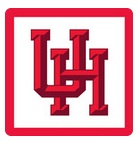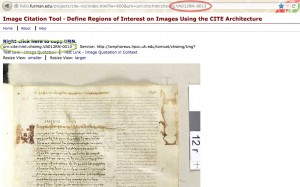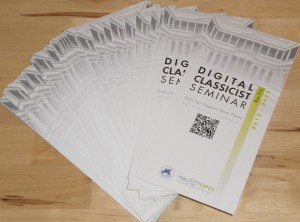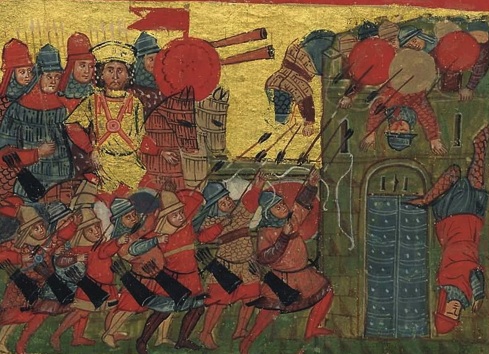 From Casey Dué:
From Casey Dué:
The University of Houston invites applications for a post-doctoral fellowship in Digital Humanities beginning January 16, 2013. The position is available for one year and renewable for a second year at the discretion of the University. We welcome candidates who hold (or will hold by January 2013) a Ph.D. in any humanities discipline, but particularly encourage applications from candidates with expertise and research in digital humanities and/or computational methods. Any applicant should have received his or her Ph.D. no earlier than 2010.
Monica Berti on September 12 2012
Digital Humanities Postdoc at the University of Houston
Monica Berti on September 6 2012
Homer Multitext Tutorial: Using the Image Citation Tool to “Quote” from an Image of the Venetus A
Students and researchers can use the HMT Image Citation Tool to “quote” from high resolution images of the Venetus A. This tutorial attempts to provide very practical, step-by-step guidance to help new users create and use quotations from these valuable images. To learn more about how and why you might want to use this tool, see the post by Christopher Blackwell on the Homer Multitext blog. 
Monica Berti on August 25 2012
The banquet of the digital scholars – Humanities Hackathon
 Humanities Hackathon on editing Athenaeus and on the Reinvention of the Edition in a Digital Space
Humanities Hackathon on editing Athenaeus and on the Reinvention of the Edition in a Digital Space
October 10-12, 2012
Universität Leipzig (ULEI) & Deutsches Archäologisches Institut (DAI) Berlin
Co-directors: Monica Berti – Marco Büchler – Gregory Crane – Bridget Almas
The University of Leipzig will host a hackathon that addresses two basic tasks. On the one hand, we will focus upon the challenges of creating a digital edition for the Greek author Athenaeus, whose work cites more than a thousand earlier sources and is one of the major sources for lost works of Greek poetry and prose. At the same time, we use the case Athenaeus to develop our understanding of to organize a truly born-digital edition, one that not only includes machine actionable citations and variant readings but also collations of multiple print editions, metrical analyses, named entity identification, linguistic features such as morphology, syntax, word sense, and co-reference analysis, and alignment between the Greek original and one or more later translations.
Monica Berti on August 3 2012
How do we quote from an image? The Image Citation Tool
How do we quote from an image? This is the big question at the core of the new tool developed by The Homer Multitext Project.
Monica Berti on July 23 2012
Digital Classicist Berlin
Here is the announcement of the Digital Classicist Berlin, a seminar series inspired by the ICS London Seminar.
The Call for Papers is now open with deadline 15 September 2012.
Monica Berti on June 26 2012
Assembling bricks in the toy box
Monica Berti, “Assembling Bricks in the Toy Box: Quotations and Text Re-use Detection of Lost Works”: eTraces Talks, Universität Leipzig – Raum 0-18, Johannisgasse 26, June 26, 2012, 9:00 am
Monica Berti on May 20 2012
Gli storici greci frammentari e le età della trasmissione
Giornate di studio sulla storiografia greca frammentaria – III edizione: Gli storici greci frammentari e le età della trasmissione: Alessandria, Roma, Bisanzio, Genova, 29-30 maggio 2012
Programma
Le Giornate di Studio sulla storiografia greca frammentaria, giunte già alla terza edizione (I: 2007; II: 2009), si inseriscono nell’ambito dell’attività di ricerca svolta dall’Unità di Genova in seno al progetto scientifico internazionale I frammenti degli storici greci e nel contesto del progetto finanziato PRIN 2008 Storici greci in frammenti: studi ed edizioni critiche, entrambi coordinati da E. Lanzillotta dell’Università di Roma Tor Vergata.
Monica Berti on May 4 2012
Collecting Fragments in the 21st Century
Collecting fragments in the 21st century – LECTIO › Laboratory for Critical Text Editing
May 14, 2012
In recent years the attitude of scholars towards Greek and Roman authors transmitted in fragmentary form has changed. The optimism of earlier generations that one may be able to reconstruct their works by collecting and combining their ‘remains’ and, if possible, by supplementing these ‘remains’ by means of ‘Quellenforschung’ has given way to a more realistic awareness of our limits.
